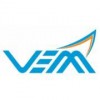Filter interviews by
MKU Internship Trainee Interview Questions and Answers
MKU Internship Trainee Interview Experiences
1 interview found
I applied via Campus Placement
(1 Question)
- Q1. Introduction about myself
Top trending discussions






Interview questions from similar companies

Software Engineer Interview Questions & Answers
Tata Advanced Systemsposted on 22 Feb 2020
I applied via Naukri.com and was interviewed in Jan 2020. There were 3 interview rounds.
Interview Questionnaire
5 Questions
- Q1. 1. Work experience in previous organization
- Ans.
Worked as a software engineer for 3 years at XYZ Company, specializing in front-end development.
Developed and maintained front-end features for web applications
Collaborated with cross-functional teams to deliver projects on time
Participated in code reviews and provided feedback for improvements
- Q2. 2. Practical example of how did you use STL in previous work experience
- Ans.
Utilized STL in previous work experience for efficient data manipulation and storage
Used vector to store and manipulate dynamic arrays of data
Utilized map for efficient key-value pair storage and retrieval
Implemented algorithms from the algorithm library for sorting and searching data
- Q3. 3. Practical example of how did you use OOPS in previous work experience
- Ans.
Used OOPS principles to design and implement a modular system for managing user data
Created classes for User, Admin, and Moderator with inheritance and polymorphism
Implemented encapsulation by restricting access to certain data fields through getters and setters
Utilized abstraction to hide complex implementation details from other parts of the system
Implemented interfaces for different user roles to ensure consistent b
- Q4. 4. Practical example of how did you use Multithreading in previous work experience
- Ans.
Implemented multithreading in a web scraping project to improve performance and efficiency.
Used multithreading to scrape data from multiple websites simultaneously
Implemented thread pooling to manage and reuse threads efficiently
Utilized synchronization techniques to prevent data corruption and ensure thread safety
- Q5. 5. All other questions were to check GK of software engineering like Can Java program have memory leaks? What do you prefer efficiency or performance etc
Interview Preparation Tips

Consultant Interview Questions & Answers
Honeywell Technology Solutionsposted on 20 Feb 2021
I applied via Recruitment Consultant and was interviewed in Jan 2021. There were 4 interview rounds.
Interview Questionnaire
1 Question
- Q1. Self introduction, Jam round, hr round, technical round.
Interview Preparation Tips

I applied via Recruitment Consulltant and was interviewed before Aug 2022. There were 3 interview rounds.

It is like gate exam paper more of electronics questions than programming languages. Here the programming language is c and embedded
(5 Questions)
- Q1. Basic level questions on c but indepth discussion on the academic projects.
- Q2. Explain Compilation stages
- Ans.
Compilation stages involve preprocessing, compilation, assembly, linking, and loading.
Preprocessing: Includes expanding macros, handling conditional compilation, and file inclusion.
Compilation: Translates source code into assembly code or machine code.
Assembly: Converts assembly code into object code.
Linking: Combines multiple object files and libraries into a single executable.
Loading: Loads the executable into memory
- Q3. Logics on bit wise operators
- Ans.
Bitwise operators are used to perform operations at the bit level on binary numbers.
Bitwise AND (&) - sets a bit to 1 only if both input bits are 1
Bitwise OR (|) - sets a bit to 1 if either input bit is 1
Bitwise XOR (^) - sets a bit to 1 if the input bits are different
Bitwise NOT (~) - inverts all the bits
Left shift (<<) - shifts the bits to the left by a specified number of positions
Right shift (>>) - shifts the bits
- Q4. Understanding of pointers
- Ans.
Pointers are variables that store memory addresses of other variables in programming languages like C and C++.
Pointers are used to store memory addresses of variables.
They allow direct manipulation of memory locations.
Pointers can be used to pass variables by reference.
Example: int *ptr; ptr = # *ptr = 10; // num now equals 10
- Q5. Volatile and non volatile keywords
Interview Preparation Tips
Skills evaluated in this interview

I applied via Referral and was interviewed in Aug 2023. There was 1 interview round.
(1 Question)
- Q1. How to choose mosfet
- Ans.
Choose a MOSFET based on voltage, current, power dissipation, switching speed, and package type.
Consider voltage and current requirements
Look at power dissipation and thermal considerations
Evaluate switching speed needed for the application
Choose the appropriate package type for mounting and heat dissipation
Check for additional features like built-in protection circuits
Example: For high power applications, choose a MOS

System Engineer Interview Questions & Answers
Tata Lockheed Martin Aerostructuresposted on 18 Dec 2024
I applied via Company Website and was interviewed before Dec 2023. There was 1 interview round.
(2 Questions)
- Q1. What are your goals
- Ans.
My professional goal is to become a certified System Engineer and work on complex projects that challenge me to continuously learn and grow.
Obtain certification as a System Engineer
Work on complex projects to enhance skills
Continuously learn and grow in the field
Seek opportunities for advancement and leadership roles
- Q2. Experience with system eng orocess
- Ans.
I have extensive experience with system engineering processes in various industries.
Led cross-functional teams to design and implement complex systems
Utilized tools such as requirements management software and system modeling tools
Performed system integration and testing to ensure functionality and performance
Collaborated with stakeholders to gather and analyze requirements
Implemented system engineering best practices

Associate Interview Questions & Answers
Tata Lockheed Martin Aerostructuresposted on 24 Jul 2021
Interview Questionnaire
12 Questions
- Q1. What is fuselage station
- Ans.
Fuselage station refers to a specific location on an aircraft's fuselage.
Fuselage station is a measurement of distance along the fuselage, typically measured in inches or millimeters.
It is used as a reference point for various components and systems on the aircraft.
For example, an aircraft's doors, windows, wings, and tail are all located at specific fuselage stations.
Fuselage station 0 is usually defined as the refere...
- Q2. What is butt line
- Ans.
Butt line is not a commonly used term. It could refer to the line where the buttocks meet the thighs.
Butt line is not a medical term.
It could refer to the line where the buttocks meet the thighs.
It is not a commonly used term and may have different interpretations depending on the context.
- Q3. What is water line
- Ans.
Water line refers to the pipe or tubing that carries water from the main supply to a building or property.
Water line is an essential component of a plumbing system.
It can be made of various materials such as copper, PVC, or galvanized steel.
The size of the water line depends on the water demand of the building or property.
Water lines can be underground or above ground.
A water line break or leak can cause significant da
- Q4. Cutting tools
- Q5. Drill bit sizes
- Q6. In drawing what is fast angel What is thired ange projection
- Ans.
The question is unclear and seems to contain errors.
The question may be referring to 'fast angle' and 'third angle projection' in technical drawing.
Fast angle refers to a type of projection where the object is viewed from an angle that is not perpendicular to any of its faces.
Third angle projection is a method of drawing 3D objects in which the object is placed in a box with three sides and projected onto a plane.
Witho...
- Q7. What is the meaning of rivet how will it work
- Ans.
A rivet is a metal fastener used to join two or more pieces of material together permanently.
Rivets are commonly used in construction, automotive, and aerospace industries.
They are inserted into pre-drilled holes and then deformed to hold the materials together.
Rivets can be made of various materials including aluminum, steel, and copper.
They are often used in place of screws or bolts when a permanent joint is required...
- Q8. General drill bit angel
- Q9. How many cutting angels in reamer
- Ans.
The number of cutting angles in a reamer varies depending on the type and size of the reamer.
The number of cutting angles can range from 2 to 6.
The cutting angles are designed to remove material from the workpiece as the reamer rotates.
The cutting angles can be straight or spiral, and can be symmetrical or asymmetrical.
The number and angle of the cutting edges can affect the surface finish and accuracy of the hole.
Exam...
- Q10. How many cutting angle in drill bit
- Ans.
Drill bits can have various cutting angles depending on their purpose and material.
The most common cutting angle for general purpose drill bits is 118 degrees.
Drill bits for harder materials like metal may have a sharper angle of 135 degrees.
Masonry drill bits have a flatter angle of 90 degrees to prevent cracking of the material.
The cutting angle affects the efficiency and precision of the drilling process.
- Q11. Drill bit made by
- Ans.
Drill bits are made by various manufacturers using different materials and designs.
Drill bits can be made from high-speed steel, cobalt, carbide, or diamond.
Manufacturers include DeWalt, Bosch, Milwaukee, and Irwin.
The design of the drill bit can vary depending on the intended use, such as twist bits, spade bits, or hole saws.
- Q12. How many cutting files
- Ans.
The number of cutting files depends on the project requirements and design complexity.
The number of cutting files can range from a few to hundreds or even thousands.
It also depends on the type of cutting machine being used.
For example, a laser cutting machine may require different files than a CNC router.
The number of cutting files can also vary based on the material being cut and its thickness.
It is important to have ...

Interview Questionnaire
2 Questions
- Q1. Explain about the current projects i have dealt with
- Q2. Questions related to regression fitting

I applied via Recruitment Consulltant and was interviewed before Feb 2021. There were 5 interview rounds.
Basic c Programming and Embedded Systems
(1 Question)
- Q1. C and Do-178b questions
(1 Question)
- Q1. C and Embedded system and Project related
(1 Question)
- Q1. Manager Round, Mostly technical
(1 Question)
- Q1. Package discussion and my previous employer details
Interview Preparation Tips

(2 Questions)
- Q1. Differentiate between RISC and CISC
- Ans.
RISC stands for Reduced Instruction Set Computing and CISC stands for Complex Instruction Set Computing.
RISC processors have a smaller set of simple instructions, while CISC processors have a larger set of complex instructions.
RISC processors typically execute instructions in one clock cycle, while CISC processors may require multiple clock cycles.
RISC processors rely on optimizing compilers for performance, while CISC...
- Q2. Define and differentiate interpreter and compiler
- Ans.
Interpreter translates code line by line while compiler translates entire code at once.
Interpreter: translates code line by line, slower execution, easier debugging (e.g. Python)
Compiler: translates entire code at once, faster execution, harder debugging (e.g. C++)
MKU Interview FAQs
Tell us how to improve this page.
MKU Interviews By Designations
Interview Questions for Popular Designations
- Internship Position Interview Questions
- Financial Markets Internship Interview Questions
- Trainee Interview Questions
- Graduate Engineer Trainee (Get) Interview Questions
- Management Trainee Interview Questions
- Engineer Trainee Interview Questions
- Graduate Trainee Interview Questions
- Software Engineer Trainee Interview Questions
- Show more
MKU Internship Trainee Interview Process
based on 1 interview
Interview experience
Interview Questions from Similar Companies
|
Senior Executive
43
salaries
| ₹2.2 L/yr - ₹5.5 L/yr |
|
Assistant Manager
23
salaries
| ₹4 L/yr - ₹9 L/yr |
|
Deputy Manager
23
salaries
| ₹6 L/yr - ₹13 L/yr |
|
Executive Production
13
salaries
| ₹1.5 L/yr - ₹4.3 L/yr |
|
Senior Accounts Executive
9
salaries
| ₹2.1 L/yr - ₹3.5 L/yr |

Tata Advanced Systems

Hindustan Aeronautics

Honeywell Technology Solutions

GE
- Home >
- Interviews >
- MKU Interview Questions >
- MKU Internship Trainee Interview Questions








